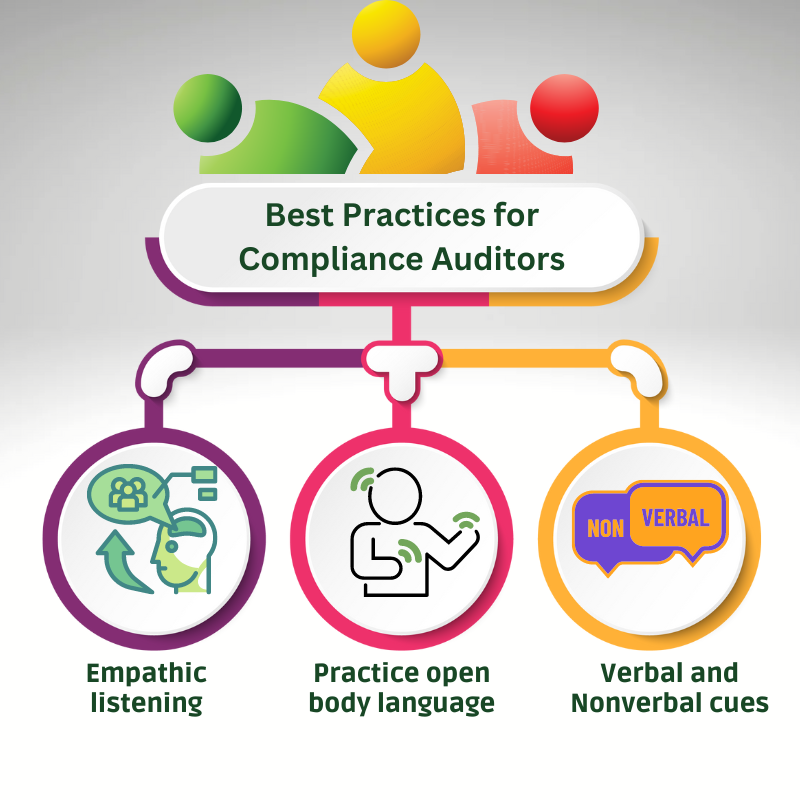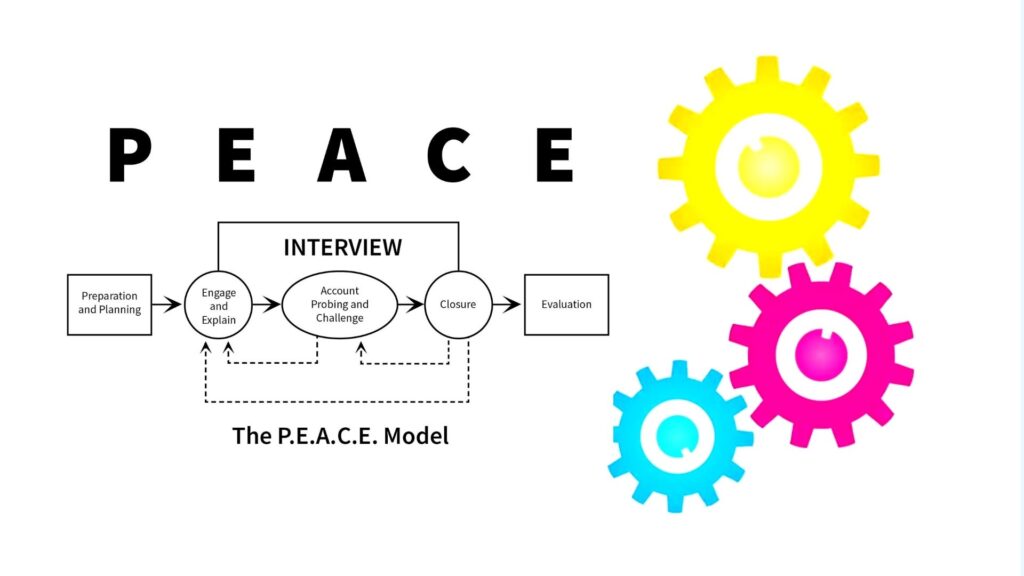In the intricate tapestry of the corporate world, ESG auditors are the meticulous weavers ensuring that the ethical and legal threads align to create a cohesive and principled design. Their role, pivotal in safeguarding an organization’s adherence to standards, laws, and ethical guidelines, demands a toolkit brimming with best practices, especially in the realm of conducting effective interviews. This blog aims to illuminate the best auditing practices, with a spotlight on the nuanced art of interviewing, essential for unraveling the complex narratives within organizations.

The Importance of Using a Structured Approach and Advanced Interviewing Techniques
Employing a structured approach in interviews, such as the PEACE model, and integrating advanced techniques like those from Dr. Shawn Christopher Shea, are fundamental for the efficacy and integrity of ESG audits. The PEACE model provides a comprehensive framework that ensures each interview is conducted methodically, enhancing the consistency and reliability of the information gathered. This structured approach helps auditors navigate interviews systematically, from preparation through to evaluation, ensuring no critical details are overlooked.
Simultaneously, Dr. Shea’s techniques, which include strategies like normalization and gentle assumption, enrich this process by allowing auditors to delve deeper into sensitive topics and elicit more nuanced responses. Together, these methods foster an environment where interviewees feel understood and respected, thereby encouraging openness and accuracy in their responses, which is crucial for the thorough assessment of compliance and ethical practices within an organization.
The Foundation: Understanding the PEACE Model

A cornerstone in the auditor’s repertoire for conducting insightful interviews is the PEACE model. Rooted in ethical and non-confrontational techniques, this model guides auditors through the nuanced process of engaging interviewees, from preparation to evaluation, ensuring a comprehensive understanding of the organization’s practices. It emphasizes Preparation and Planning, Engage and Explain, Account, Closure, and Evaluation phases, each critical for fostering an environment conducive to honest and informative dialogue.
Preparation and Planning: The Bedrock of Success
Effective audits begin long before the first question is asked. Auditors must immerse themselves in a thorough preparation phase, understanding not just the letter of the standards and laws applicable but their spirit. This involves a meticulous review of the organization’s history, previous audits, and any potential areas of concern. A strategic approach to selecting interviewees and formulating questions sets the stage for a successful audit, ensuring that every inquiry is purposeful and aligned with the audit’s objectives.
Building Rapport: The Key to Open Dialogue
The initial moments of an interview set the tone for the interaction. Engaging and explaining the purpose, scope, and confidentiality of the audit process are pivotal. This phase is where auditors establish trust and rapport, making it clear that the audit is not an adversarial process but a collaborative effort towards improvement. Techniques that prioritize empathy, active listening, and cultural sensitivity are indispensable tools for auditors, enabling them to navigate the diverse landscapes of global organizations.
The Heart of the Matter: Account and Closure
In the Account phase, auditors must employ a balanced mix of open-ended questions, probing inquiries, and attentive listening to encourage interviewees to share their experiences and perceptions freely. This phase is the crux of the audit interview, where the depth and breadth of information are uncovered. Following this, the Closure phase ensures that both parties have a mutual understanding of the discussion, offering a final opportunity to clarify any points and solidify the rapport established.
Conclusion and Improvement: The Evaluation Phase
Post-interview, auditors engage in a critical evaluation of both the content gathered and their own performance. This reflective practice is essential for continuous improvement, enabling auditors to refine their interviewing techniques and strategies for future audits.
Ethical Considerations and Confidentiality
A guiding principle in all auditing practices, and particularly in conducting interviews, is the adherence to ethical standards and the protection of confidentiality. Auditors must navigate the delicate balance of gathering essential information while respecting the privacy and dignity of all interviewees. This ethical stance not only reinforces the integrity of the audit process but also builds trust within the organization.
Continuous Learning and Adaptation
The landscape of laws, standards, and ethical considerations is ever-evolving, and so too must be the knowledge and skills of ESG auditors. Engaging in continuous education, staying abreast of changes in the field, and adapting auditing practices accordingly are vital for maintaining the relevance and effectiveness of audits.
Conclusion: The Art and Science of Auditing
ESG auditing, especially through the lens of effective interviewing, is both an art and a science. It requires a foundation of strong ethical principles, a strategic approach to preparation and planning, and the nuanced skills of engagement and communication. By adhering to best practices, including the holistic approach offered by the PEACE model, auditors can elevate the quality of their audits, contributing to the cultivation of ethical, compliant, and responsible organizations. In this dynamic interplay of standards, ethics, and human experiences, auditors are not just overseers but facilitators of positive change, weaving integrity into the fabric of corporate culture.
